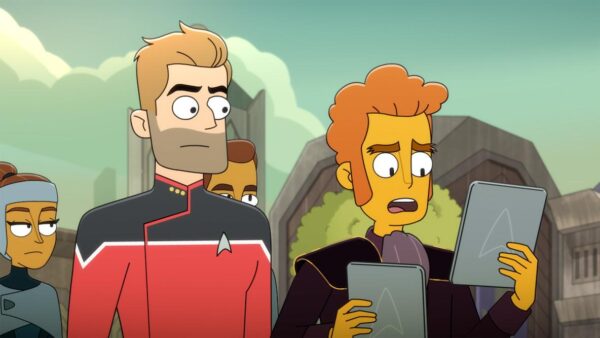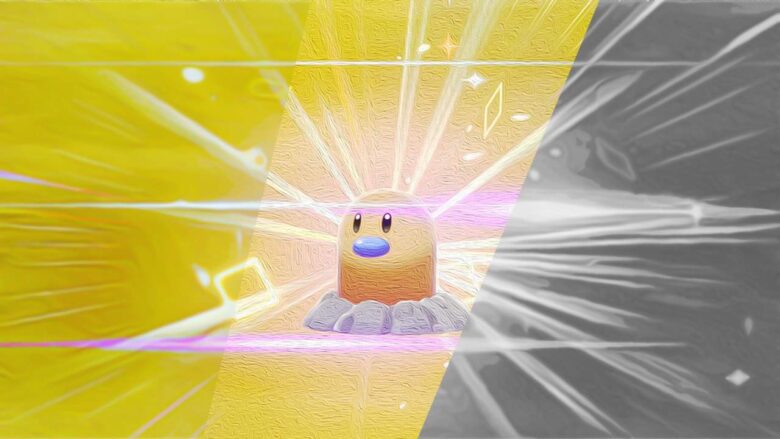
The first season of lower covers was a pleasant surprise for many at the Fandom of Star Trek. What many people had written as Family Guy, or Rick and Morty-Trek ended up being a healthier love letter in the history of the franchise. It was full of a lot of low eyebrow mood, sure, but it also showed characters that were genuinely cared for each other and what they do. Fortunately, season two is more of the same.
The lower covers takes its name of one season seven, the episode of the next generation that revolved around the lives of four badges, and the parties that played on a mission that only the crew of the bridge really understood the full range of. In general, one of the best episodes of the franchise is considered, which meant that anything that even mentioned it vaguely had a lot to fulfill. Fortunately, the creator of lower covers and the executive producer Mike McMahan was a big fan with a deep knowledge of Trek. He is also the creator of the parody’s twitter account of @ tng_s8, as well as a veteran of animated entertainment such as South Park, AX Cop and, yes, Rick and Morty.
The presaits of a series of lower covers was that the stories would focus on a central group of four badges in the USS cerritos: Beckett Mariner, Brad Boimler, D’Vana Tendi and Sam Rutherford, also known as “Beta SHIFT”. There was a bridge crew, expressed by stars like Jerry O’Connell and Dawnn Lewis, but his stories would always be what is happening in the background, and the badges would not always be privileges for what is happening with the ship.
However, unlike the TNG episode, even the audience has remained outside the circuit on many occasions, with the badges even forced to testify on behalf of their commanders in an inexplicable essay. (It turned out to be a party in honor of the superior officers, who confused our protagonists even more).
It is a pretty good idea for a show, one that has given hilarious results. But Star Trek does not have a good record of sticking to a concept. Most of the shows, since Tng have begun as one thing and become something more over the course of their careers. All shows evolve, but changes in Trek have been obvious and intentional. The deep space of the nine intended to be a type of “front front” show, which shows the long-term relationship between the Starfleet and one of the planets found, Bajor. For the three season, they were given a war vessel, and the four season brought Tng-Veteran Worf and a war with the Klingon Empire.
Star Trek: Voyager operated in the premise of “What happens if a Starfleet boat was lost away from home?” And stuck with that, sure, but also continued to operate like any other container of Starfleet’s billboard for seven seasons, and the ship remained in good condition despite the lack of spaced for repair, something that frustrated the writer Ronald D. Moore and later. To create the restart of Battlastar Galactica (the title of the title was an accident by the end). They also ended up restoring contact with the federation in later seasons, which moistened the whole issue “only in a strange quadrant”.
The first season of lower covers was a pleasant surprise for many at the Fandom of Star Trek. What many people had written as Family Guy, or Rick and Morty-Trek ended up being a healthier love letter in the history of the franchise. It was full of a lot of low eyebrow mood, sure, but it also showed characters that were genuinely cared for each other and what they do. Fortunately, season two is more of the same.
The lower covers takes its name of one season seven, the episode of the next generation that revolved around the lives of four badges, and the parties that played on a mission that only the crew of the bridge really understood the full range of. In general, one of the best episodes of the franchise is considered, which meant that anything that even mentioned it vaguely had a lot to fulfill. Fortunately, the creator of lower covers and the executive producer Mike McMahan was a big fan with a deep knowledge of Trek. He is also the creator of the parody’s twitter account of @ tng_s8, as well as a veteran of animated entertainment such as South Park, AX Cop and, yes, Rick and Morty.
The presaits of a series of lower covers was that the stories would focus on a central group of four badges in the USS cerritos: Beckett Mariner, Brad Boimler, D’Vana Tendi and Sam Rutherford, also known as “Beta SHIFT”. There was a bridge crew, expressed by stars like Jerry O’Connell and Dawnn Lewis, but his stories would always be what is happening in the background, and the badges would not always be privileges for what is happening with the ship.
However, unlike the TNG episode, even the audience has remained outside the circuit on many occasions, with the badges even forced to testify on behalf of their commanders in an inexplicable essay. (It turned out to be a party in honor of the superior officers, who confused our protagonists even more).
It is a pretty good idea for a show, one that has given hilarious results. But Star Trek does not have a good record of sticking to a concept. Most of the shows, since Tng have begun as one thing and become something more over the course of their careers. All shows evolve, but changes in Trek have been obvious and intentional. The deep space of the nine intended to be a type of “front front” show, which shows the long-term relationship between the Starfleet and one of the planets found, Bajor. For the three season, they were given a war vessel, and the four season brought Tng-Veteran Worf and a war with the Klingon Empire.
Star Trek: Voyager operated in the premise of “What happens if a Starfleet boat was lost away from home?” And stuck with that, sure, but also continued to operate like any other container of Starfleet’s billboard for seven seasons, and the ship remained in good condition despite the lack of spaced for repair, something that frustrated the writer Ronald D. Moore and later. To create the restart of Battlastar Galactica (the title of the title was an accident by the end). They also ended up restoring contact with the federation in later seasons, which moistened the whole issue “only in a strange quadrant”.


